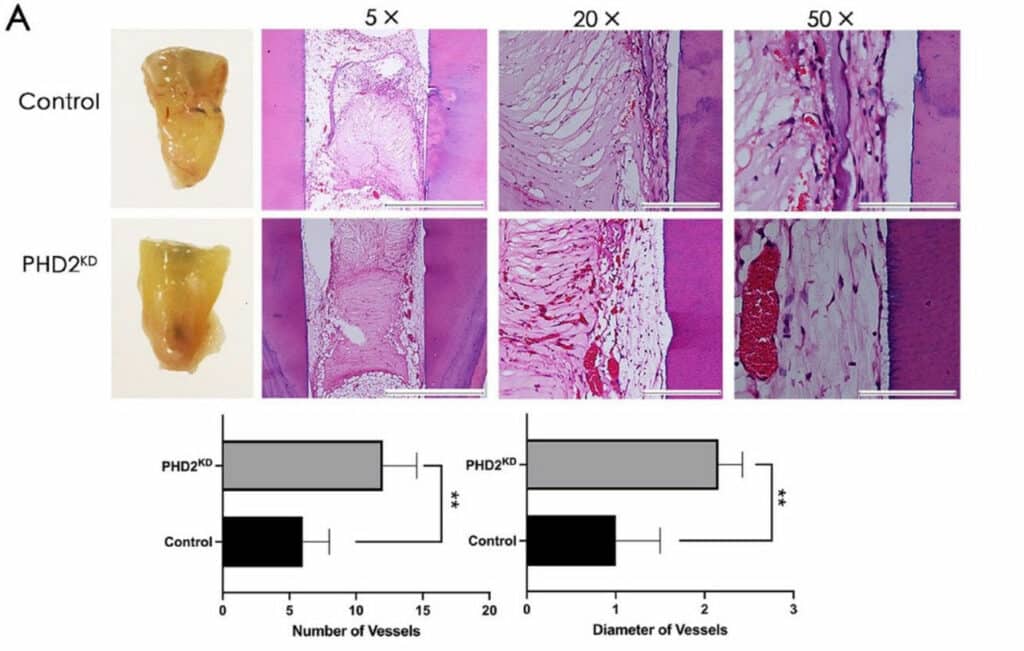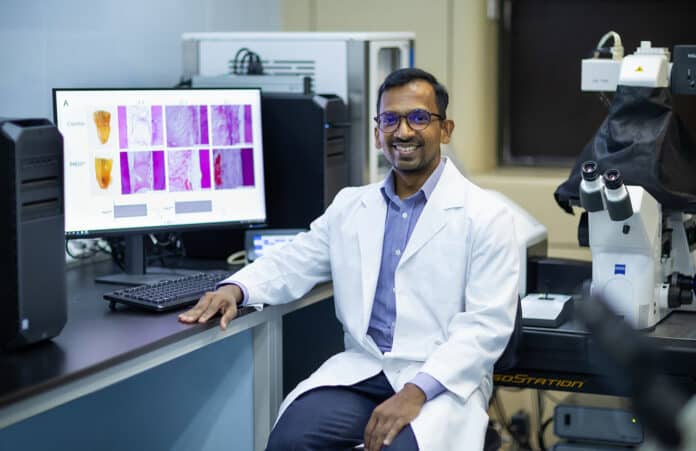Nowadays, most people face teeth-related issues, expecting to retain their natural teeth or want functional teeth replacement with modern techniques. Modern techniques for missing tooth replacement include complete dentures, cast partial dentures, Implants, and prosthetic crowns. But these are not as equivalent to functional teeth and natural teeth. Recent research is ongoing on boosting tooth regeneration by inducing positive stress.
The study published online in the Journal of Dental Research by Dr. Waruna Dissanayaka, an Assistant Professor in Oral Biosciences, has overcome adaptive mechanisms in tooth stem cells’ preconditioning stress that boost tooth pulp tissue generation. This positive stress can have good changes in tooth stem cells by making them more resistant to disease and injury. So, in the future, this can help to improve implant cell survival and pulp tissue regeneration.
How positive stress can boost tooth regeneration:
When the tooth is injured or decayed, the vital tissue inside the tooth is exposed to harmful bacteria, which is susceptible to infection. If the tooth pulp is infected, the recent approach is to remove it and fill it with artificial material; when the pulp-less tooth is filled with inert material, the tooth dries, which makes the tooth brittle and more prone to crack and reinfection.

The only way is to replace the tooth with a prosthesis or extraction, but stem cell therapy can help in dental pulp regeneration, as per a recent study. Stem cells of human exfoliated deciduous teeth (SHED) preconditioned to a hypoxic condition by hypoxia-inducible factor 1α (HIF-1α) stabilization via knockdown of prolyl hydroxylase domain-containing protein 2 (PHD2) using lentiviral short hairpin RNA. HIF-1 was inserted in Pura Matrix hydrogel, which was injected in the root canal of a human tooth fragment and implanted in immunodeficient mice. Then within 28 days, dental pulp-like tissue formation was seen with a higher level of vascularization, which helps enlist host blood vessels.
Research carried out to boost tooth pulp regeneration:
Dr. Waruna Disasanayaka and his team focus on developing the lost tooth pulp, which revitalizes the tooth and functions like a normal tooth. The tooth root canal is surrounded by hard dental tissue with less blood supply creating a harsh environment for cells of low oxygen and nutrients. So, the research team develops a preconditioning protocol that helps cells in low oxygen conditions to activate the protein.
Dr. Yuanyuan Han, a co-investigator of the team, pointed out: “As this protein was reported to activate several key adaptive mechanisms, we wondered whether this phenomenon can be applied to improve cell survival following transplantation until a sufficient blood supply is achieved.”
He also explained, “In our study, we found that these cells activate a metabolic mechanism to produce energy under low oxygen conditions and scavenge harmful metabolites produced in stress conditions.
Dr. Dissanayaka says, “Interestingly, we also found that preconditioned cells significantly enhanced the dental hard tissue formation within the regenerated pulp tissue.” “Former research has revealed that our cells possess number of adaptive mechanisms for stress, which are regulated by several key genes encoded in our DNA that are normally inactive.”
“If we can activate these genes, downstream expression of specific proteins can prime less vulnerable to injury,” Dr. Dissanyaka said. He also said, “Our aim is to find ways to take advantage of this capacity and use positive stress to help regenerate the dental tissues.”
He aims to find new strategies to enhance the therapeutic potential of tooth stem cells.
This stem cell therapy helps to regenerate tooth tissue pulp which can help to retain natural tooth functioning. In the future, it will help to overcome teeth-related problems by avoiding the replacement of teeth by various means.
Journal Reference
- Y Han, M Koohi-Moghadam, Q Chen, L Zhang, H Chopra, J Zhang, W L Dissanayaka. HIF-1α Stabilization Boosts Pulp Regeneration by Modulating Cell Metabolism. Journal of Dental Research DOI: 10.1177/00220345221091528
